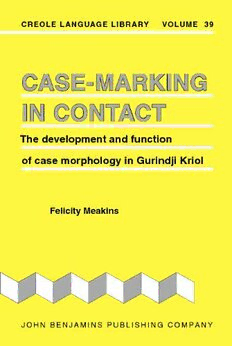
Case-Marking in Contact: The development and function of case morphology in Gurindji Kriol (Creole Language Library) PDF
335 Pages·2011·22.117 MB·
Most books are stored in the elastic cloud where traffic is expensive. For this reason, we have a limit on daily download.
Preview Case-Marking in Contact: The development and function of case morphology in Gurindji Kriol (Creole Language Library)
Description:
Until recently, mixed languages were considered an oddity of contact linguistics, with debates about whether or not they actually existed stifling much descriptive work or discussion of their origins. These debates have shifted from questioning their existence to a focus on their formation, and their social and structural features. This book aims to advance our understanding of how mixed languages evolve by introducing a substantial corpus from a newly-described mixed language, Gurindji Kriol. Gurindji Kriol is spoken by the Gurindji people who live at Kalkaringi in northern Australia and is the result of pervasive code-switching practices. Although Gurindji Kriol bears some resemblance to both of its source languages, it uses the forms from these languages to function within a unique system. This book focuses on one structural aspect of Gurindji Kriol, case morphology, which is from Gurindji, but functions in ways that differ from its source.
See more
The list of books you might like
Most books are stored in the elastic cloud where traffic is expensive. For this reason, we have a limit on daily download.
